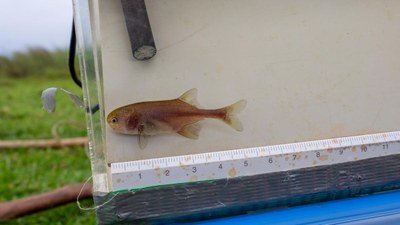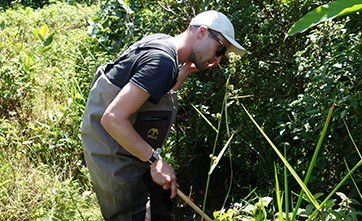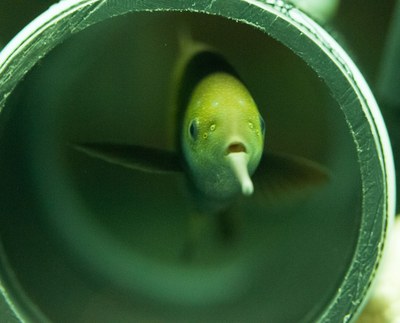Ecophysiology of mormyrid weakly electric fish
How are animal behaviour and physiology shaped by ecological constraints?
 Dr. rer. nat. Stefan Mucha
Dr. rer. nat. Stefan Mucha
How are animal behavior and physiology shaped by ecological constraints? Which strategies have evolved to facilitate survival in complex and challenging environments? In my research, I want to pursue these questions with a focus on African mormyrid weakly electric fishes.
Mormyrids - just like the independently evolved South American Gymnotiformes - use electrical discharges to navigate, hunt and communicate. The >200 known species of Mormyrids are endemic to freshwater systems of Sub-Saharan Africa. These habitats are characterized by high competition for resources, high predation pressure and increasing human-driven environmental degradation. In my PhD project, I studied how hypoxia (low oxygen availability) affects the physiology, morphology and behavior of mormyrid fishes. Oxygen is the primary source of metabolic energy, and the need to acquire enough oxygen to survive and reproduce is a key driver of animal behavior, in particular in aquatic environments.
In our new DFG-funded project, we have added temperature as environmental stressor to our experimental research. In this project, we will investigate the effects of dissolved oxygen (DO) and temperature changes in a tropical freshwater fish from an energetics perspective. We hypothesize that metabolic energy plays a central role in governing animal performance in fluctuating environments, and is directly linked to the effects of temperature and DO changes on ectothermic animals.
We will study Gnathonemus petersii (Günther, 1862), a large-brained and relatively hypoxia tolerant weakly electric fish that is found in a variety of freshwater habitats in sub-Saharan Africa that are relatively warm (26-32°C) and well oxygenated (3-8 mg oxygen per liter). They generate short, discrete electric organ discharges (EODs) and use the resulting electric fields for sensing, navigation, and communication.
We will assess the responses of G. petersii to changes in DO and temperature at behavioral, morpho-physiological and molecular levels. We will determine thermal preference and tolerance thresholds with a focus on upper thermal tolerance to assess potential effects of climate change, and test how cognitive and metabolic performance are affected at temperatures ap-proaching tolerance limits. To investigate the interactive impact of DO and temperature stress, we will combine long-term DO treatments with acute temperature challenges.




